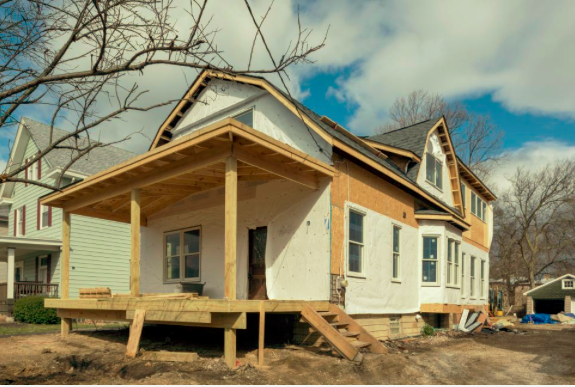There’s no place like home. We’d agree. But after spending the past few months, you might start to notice all of the opportunities for improvement in your dwelling. And while you might not be ready to have an entire team come into your home to start a major renovation project, like a kitchen remodel or bathroom renovation, that doesn’t mean that it’s not the time to start a new home improvement project. In fact, now is a great time to get started on a plan for your next home remodeling project. There’s so much that you can do to get started before you call in the professional builders and home contractors, like us.
Get Inspired.
As you’ve stayed home, you might have decided that you’re ready for a refresh. There’s a world full of ideas right at your fingertips. Get on Pinterest. Start a board and start saving pictures of spaces that you like. Seeing finished spaces will help you identify your style. Do you like stained wood or painted? Traditional tile or something that makes a statement? Neutral wall color or something cheerful and bright? Once it comes time to make selections, it can be overwhelming to look at all the options that are out there for everything from lighting fixtures to cabinetry hardware. Knowing what makes you tick is going to make this entire process a lot easier. Even if you use a design professional to help guide you through the process, you’ll likely be a lot happier with the end result when you can point to specific elements that you know that you like.
Not a Pinterest fan? There are tons of other websites just full of inspiration. We like Houzz and Decor Pad as well. There are so many home design and decor bloggers as well that will help fill your head with ideas. You can check out some of our favorites like Emily Henderson, McGee & Co and even a video blog like Quintessence, which highlights the homes of interior designers all over the world. There are plenty of magazines out there, of course, but if you’re like all of us, you probably have a lot of catalogs coming through the mail each day. Leaf through those Pottery Barn, Restoration Hardware, Ballard Designs and Grandin Road. Sure you can use these resources to furnish your home, but they also provide plenty of design tips and inspiration through their photos of staged rooms. So look at those catalogs before you recycle them!
Understand Your Priorities.
While your brain might be telling you it is time for a whole home remodel, your wallet may be telling you to pump the brakes. The cost of a home improvement project can quickly add up, so it’s a good idea to understand your motivation before starting any type of remodel. For example, you might want to prioritize a kitchen that has a non-working appliance or two or a room that may have an issue like water damage over a bathroom with outdated fixtures. The time you intend to spend in your home may also be a factor. If a move within the next five years is in your future, do you really want to manage a major kitchen renovation, when a quick refresh by changing out hardware or maybe swapping out an appliance will do? By understanding your priorities, it will also help you understand where to focus your time, energy and bank account first.
Identify Your Budget.
Do you have champagne taste and a beer budget? Join the club. Even simple projects can cost more than the average homeowner might think and when budget planning, it is important to have some set aside to cover the unexpected costs. You’ve seen those home improvement shows on HGTV where a project quickly has to be reprioritized when a family of raccoons is found nesting in attic installation or a long undiscovered leak in a bathroom has done major damage to the home. Renovation projects can be filled with surprises, so it’s important to be prepared financially. However, a limited budget doesn’t mean that a home remodel is out of the question. There are ways to scale a project to fit almost every budget. It just means that you might not be able to have it all or may have to make some compromises with materials in order to get the look you want. It may be that you can plan a project that unfolds in phase over the years, like new appliances one year and new countertops and lighting fixtures the next. Understand how much money you are willing to invest in your home first, while will help you plan both the size and scope of your project.
Line Up The Professionals.
A lot of the planning that goes into a home remodel can be done with minimal in-person contact. Almost every project can benefit from a partnership with an architect, who can make suggestions for possible layout and structural changes to your home. Brainstorming and initial budget discussions can take place over the phone. The same goes with an interior design professional, who might be able to help you with the selection of finishes. A home builder and renovation contractor, like The English Contractor, can help you put together ballpark estimates for a project. If you already have architectural plans for your project, our team can even start our more detailed estimates to help nail down the size, scope and cost of your renovation. Our estimates are very detailed and can take a few weeks to put together. If you get us started now, we’ll be ready to go once everyone is back up and running.
Although in some ways the world seemed to stop for a bit as we all managed through the COVID health crises, almost everyone we’ve spoken with has seen an uptick in what’s going inside the four walls of their home base. We’ve seen the lines at Home Depot ourselves and know that so many of you are anxious to spruce up your home. If your home project expands beyond your own DIY capabilities or interests, we’re here to help. We’re happy to help get you started with a quick phone consultation. Give us a call today.





















